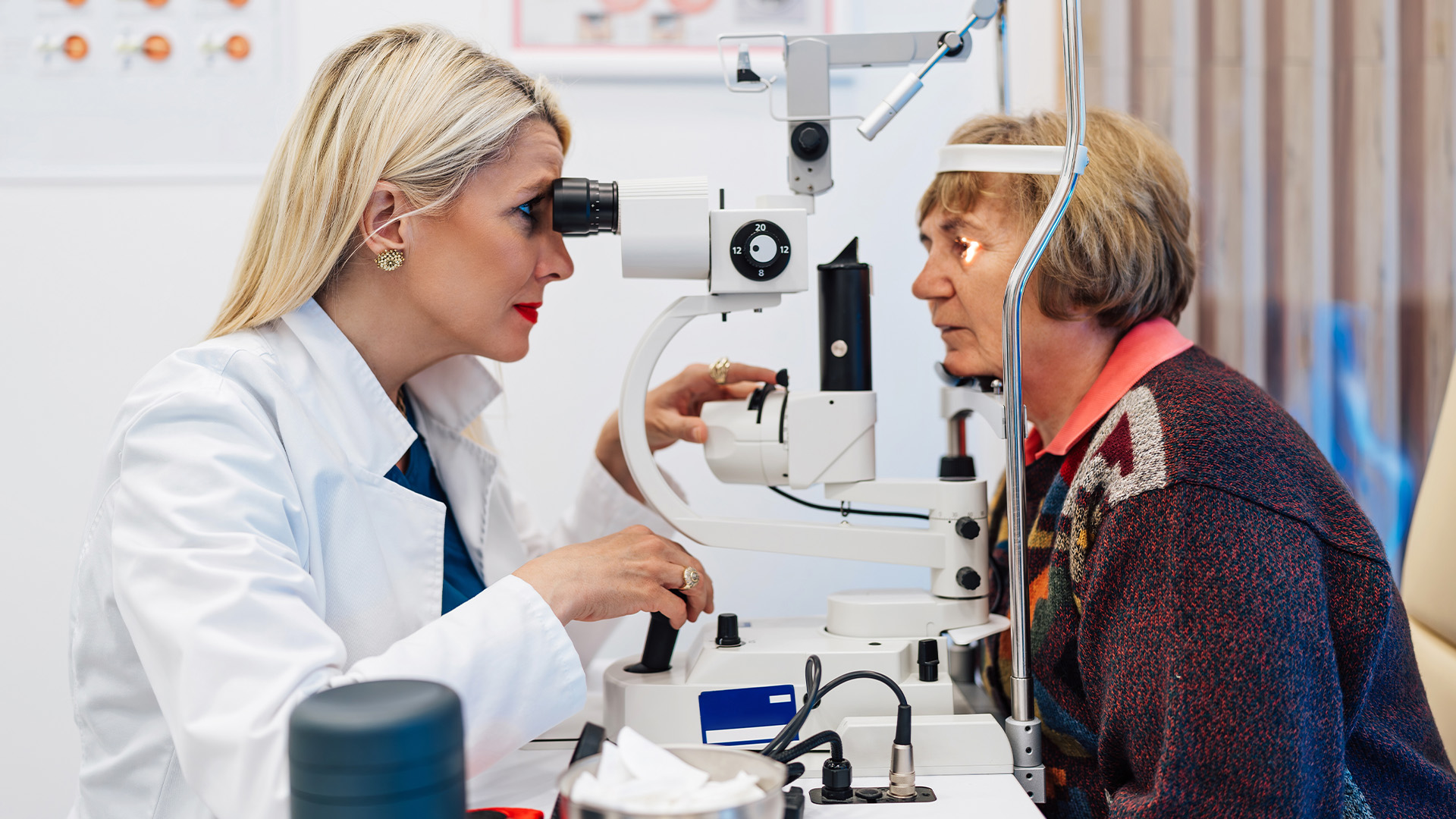Nearly one in five cases of dementia could be related to vision loss, according to a new analysis. The findings suggest that better vision care could lead to lower rates of dementia in old age. Alzheimer’s disease remains the leading cause of dementia in older Americans.
For the study, researchers at the Johns Hopkins School of Public Health looked at 2,767 Americans older than 70. Study volunteers had undergone extensive tests of thinking and memory skills, and about 11 percent had been diagnosed with Alzheimer’s disease or other forms of dementia.
Participants also completed eye exams to test for three kinds of visual impairment: near acuity, or the ability to see small objects up close, such as when reading or sewing; distance acuity, or identifying the smallest letters or objects you can make out from a distance of about 20 feet, such as when viewing an eye chart; and contrast sensitivity, or the ability to perceive crisp and clear outlines of very small objects. About a third of those in the study had impairments in one or more of these visual abilities.
Overall, the researchers estimated that 19 percent of all dementia cases could be attributable to at least one type of visual impairment. Poor contrast sensitivity showed the strongest association with memory and thinking impairments, though near and distant vision loss also contributed to cognitive loss.
The findings, published in the journal JAMA Ophthalmology, show only an association and do not prove cause-and-effect. But they add to growing evidence that vision loss may contribute to faster cognitive decline and an increased risk of Alzheimer’s disease and other forms of dementia later in life. A long-running 2020 study from Korea, for example, that looked at more than six million middle-aged and older adults found that dementia risk increased with the severity of vision loss. Other studies have found that people who have surgery to correct cataracts, a leading cause of cloudy vision in older people, are at lower risk of dementia than those who have cataracts but don’t have the surgery.
The Lancet Commission, an international panel of experts that regularly reviews the scientific literature on Alzheimer’s and dementia, recently added vision loss to a list of 14 modifiable risk factors that can raise the risk of developing dementia in older age. They estimate that about 40 percent of dementia cases could be prevented or delayed by addressing these risk factors, which also include hearing loss, smoking, high blood pressure, diabetes, obesity, head injuries, excessive alcohol use, air pollution, and lack of social interaction.
The authors of the current study note that “the results from this cross-sectional study suggest that nearly one in five prevalent dementia cases in community-dwelling U.S. adults aged 71 years or older could have at maximum been avoided if vision impairment had been eliminated. Overall, these data support the inclusion of sensory impairments as potentially modifiable risk factors for dementia prevention strategies.”
Poor vision, like poor hearing, is a form of sensory deprivation, in which the brain gets only limited stimulation. Stimulation of the brain, whether it’s through the senses or through cognitively stimulating activities like reading a newspaper or doing crossword puzzles, has been linked to a lower risk of Alzheimer’s disease. Poor vision may also limit a person’s ability to drive or get out of the house and socialize with others, and social interaction has been shown to be critical in helping to keep the aging brain in good working order.
About 80 percent of vision impairment occurs in adults aged 50 and older, and 90 percent of cases are preventable or have yet to be treated. One of the most common causes of blurry vision in older adults is cataracts, but eye diseases like glaucoma, macular degeneration and diabetes-related retinopathy are also prevalent in older people. Regular eye exams can help to identify these problems early, and effective treatments to limit vision loss are available for many of these eye problems.
The American Academy of Ophthalmology recommends that all adults who are healthy and with good vision should have a complete eye exam at least once in their 20s and twice in their 30s, increasing to up to every year or two at age 65 or older. If you wear contact lenses, see your eye doctor every year. If you have diabetes or high blood pressure or have a family history of eye disease, you may need to see the eye doctor more often.
Regular vision checks are also important for those who already have Alzheimer’s disease. Earlier studies have shown that one in three nursing home residents with Alzheimer’s disease who need eyeglasses don’t have the right glasses and can’t see clearly. Poorly corrected vision may mean they are missing out on mentally stimulating activities that may help to ease aggravation and soothe symptoms of dementia.
Experts recommend that if you care for someone with Alzheimer’s disease, a few simple steps can help avoid vision-related problems. These include labeling eyeglasses with a person’s name and phone number so that if they are lost they can be more easily recovered; having a spare pair of glasses on hand; and scheduling regular eye exams ahead of time to make sure vision prescriptions are up to date.
Content provided by Fisher Center for Alzheimer’s Research Foundation



